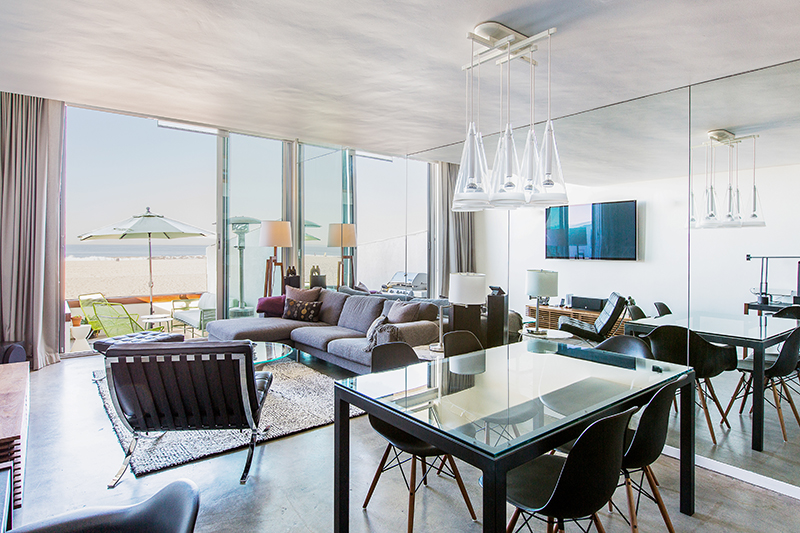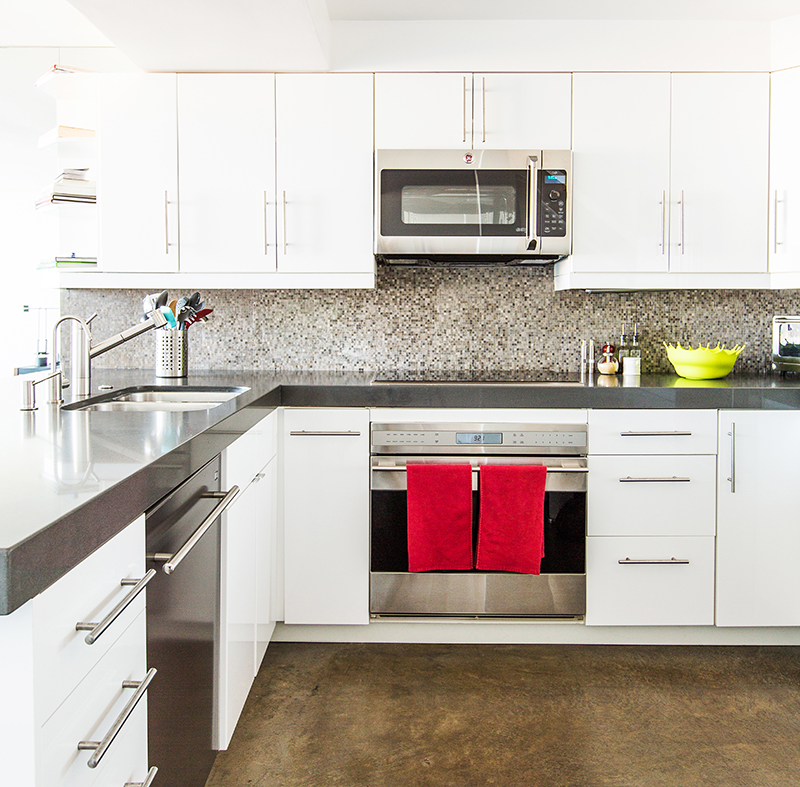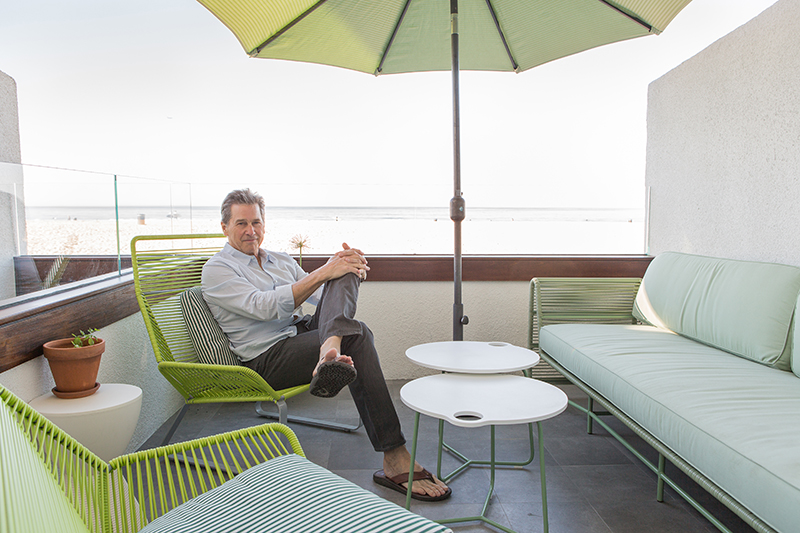I’m in London on a typically gloomy winter’s day chatting on the phone with actor, director and producer Tim Matheson, who is at his newly redesigned beachfront home in Los Angeles. Immediately engaged by his energy and warmth, I ask him to lie to me about the weather. “It’s dark and raining, a terrible day,” he says without a moment’s hesitation.
Then he breaks it to me – amid much laughter – that it’s not true at all. It’s mid-morning on a bright, cloudless day on Southern California’s spectacular Venice Beach and he couldn’t be in a better spot to enjoy it.
We move quickly to how Matheson came to be in his sun-filled beach house at all. It seems serendipity has played a lead role in the life of a man who has played more than 100 roles himself.
Perhaps best known for his breakout performance as the smooth-talking Eric “Otter” Stratton in the 1978 hit comedy “Animal House,” Matheson, now 66, has had many other high-profile roles before and since, including critical acclaim for his portrayal of Vice President John Hoynes in the NBC series “The West Wing,” which earned him two Primetime Emmy Award nominations for Best Guest Star in a Drama Series.


Actor and director Tim Matheson has opted for a sleek, masculine look for his ocean home in Marina del Ray
Having entertained audiences for more than 50 years – he was just 13 when he first appeared in Robert Young’s CBS comedy “Window on Main Street” in 1961 – Matheson currently stars as Dr. Brick Breeland in The CW hit series “Hart of Dixie,” a show he has also directed.
Matheson’s main home is in the Hollywood Hills, near Warner Brothers and Universal Studios. “When I was a young actor, I bought a main house and a guest house and I kept them for years,” he says. “As I earned more money, I moved from the guest house to the main house. I kept the guest house as a pied-a-terre for when I was working in L.A., and after my divorce I landed back there.”
Following the divorce in 2012, Matheson set about buying a beach home. With his three children grown up and living away from home, it didn’t need to be large, but it did need to be peaceful. His search took him to Santa Monica, Venice, and Pacific Palisades before he stumbled across exactly what he wanted in Marina del Rey – in a building he already knew. “A friend had lived at the beach and I’d always loved it,” he says. “I found a unit in the same building he’d lived in.”
An affluent but breezy beachside community on the Westside of L.A. – southeast of Venice and just five miles north of Los Angeles International Airport – Marina del Rey is dominated by the world’s largest man-made small craft harbor, a home port to more than 6,500 boats.
The condo Matheson purchased – a compact 1,000-square-foot former rental unit – was part of an apartment block that had been extensively remodeled on the exterior. The interior was another matter. “The inside was a disaster, it had not been touched in 40 years,” he says. “So we gutted it and scraped it back to the floors and the walls. I wanted to contemporize it and open it up, to let the light flood through. I wanted to make it sleek and simple.”
The kitchen was badly designed, with dead corner spaces and cupboards that were hard to reach. Matheson enlarged the kitchen, shortening the counter to encourage better flow through the space. He ripped out the carpets revealing the raw concrete, which he grinded off to deliver a New York loft effect. The condo is only one room wide, so he cleverly covered one wall in mirrors – extending to double height in the living room – to boost the feeling of space and draw in light.
Upstairs, a glass wall was installed to replace the dry wall that had separated the mezzanine loft from the living space below, inviting in the view. It was, he says, about using highly effective design tricks. “It’s a small space, so there is finite money you can spend and a finite number of choices you can make,” he adds.
During the six-month renovation, Matheson didn’t use an architect but called on the services of a friend, a former production designer who had helped with previous homes and was able to pull in her contacts. “It all just fell into place, it was fortuitous timing.”
The result is a space that is open and airy, but also surprisingly private. With its sleek lines, contemporary furnishings and neutral palette, it’s also resolutely masculine. The kitchen, dining and main living room are downstairs; the master bedroom, bathroom and guest bedroom/study are upstairs. The living room opens onto a generous terrace – with a state-of-the-art pizza oven – which opens directly onto Venice Beach through a private gate. The view of the beach and ocean, an ever- changing artwork, is spectacular.


So what does he love most about living there? Direct access to Venice Beach was essential. “If I was going to come all the way down here, I wanted that view, this light, this air, that access, the sound of the waves, it’s wonderful.” Its diminutive size, he suggests, is an asset. “It’s a very spare way of living. Whatever you have you have to choose to have. It’s almost ship-like. I would say my style is contemporary minimalism, a combination of form and function. It’s a metaphor for the way I try to live.”
This simple way of life is a theme that crops up repeatedly. He talks of cycling to a local farmers’ market for fresh fruit and vegetables, of cooking simple healthy dishes at home, and a sense of community – a community of like-minded, creative people that is more reminiscent of New York than the Hollywood Hills.
I suggest that the beach house is an escape from the madness of Hollywood, a place to be quiet between acting and directing. “Absolutely. Both of my houses are like that. I lived in New York when I was married and the constant noise is tiring. There is a time of life for that.”
Matheson hesitates for just a moment when I ask how he made the important decisions that have shaped his life and career – the roles he took, the homes he bought, the ventures he invested his time, money and infectious energy into. Serendipity pops up again. “I find an open door and I go through it,” he says.
Image Credits: Laure Joliet.


